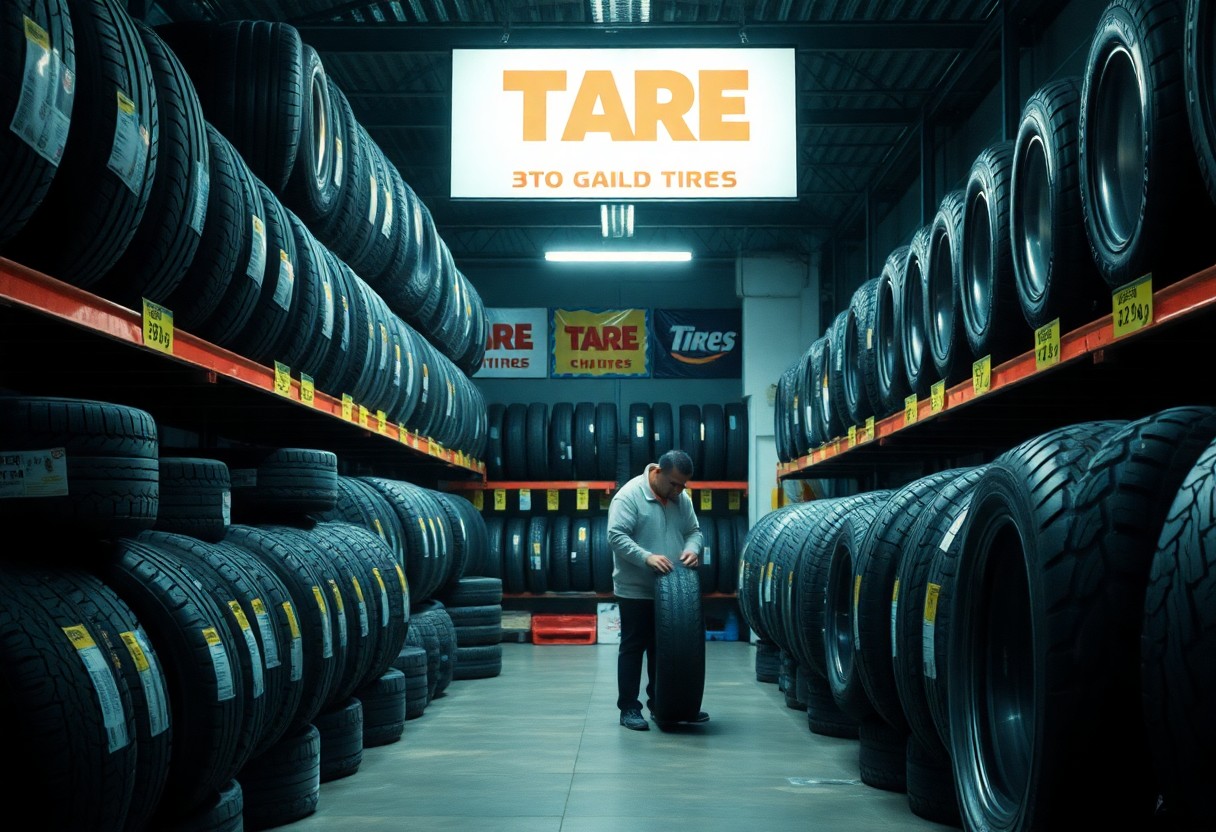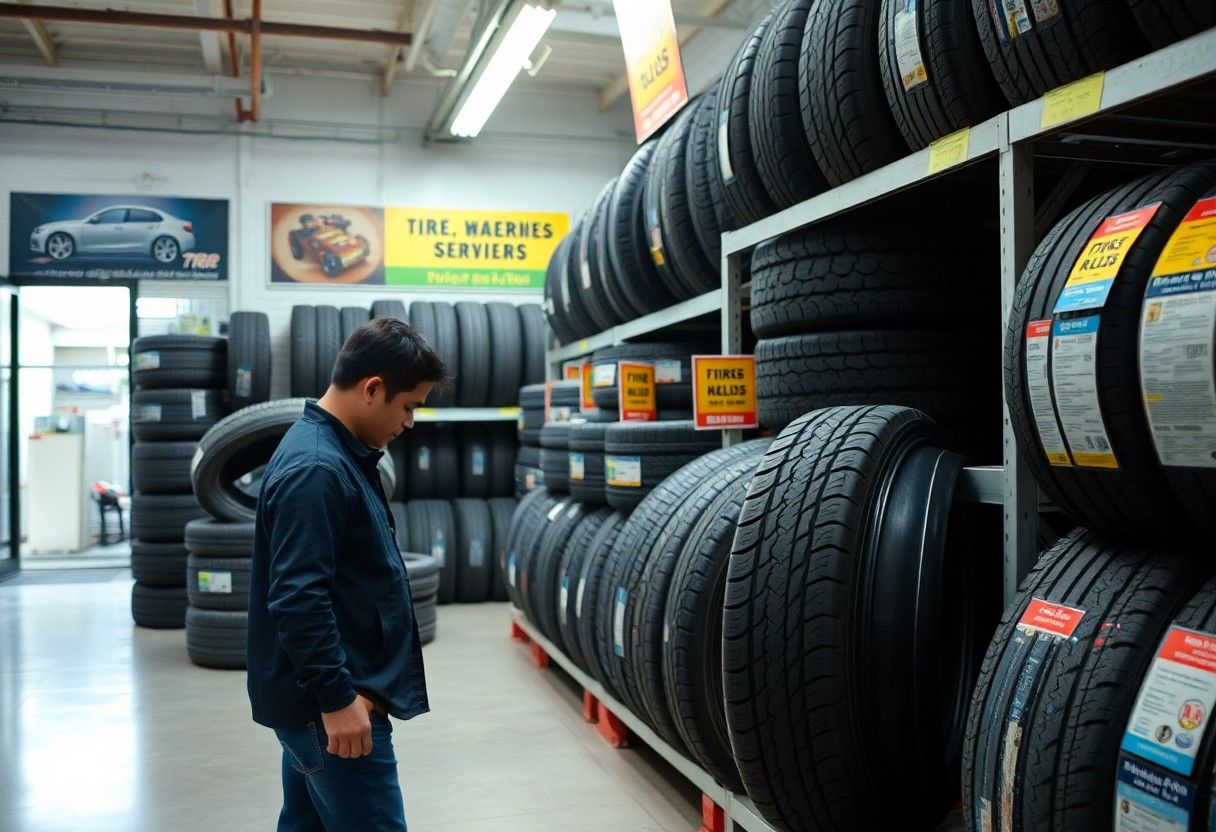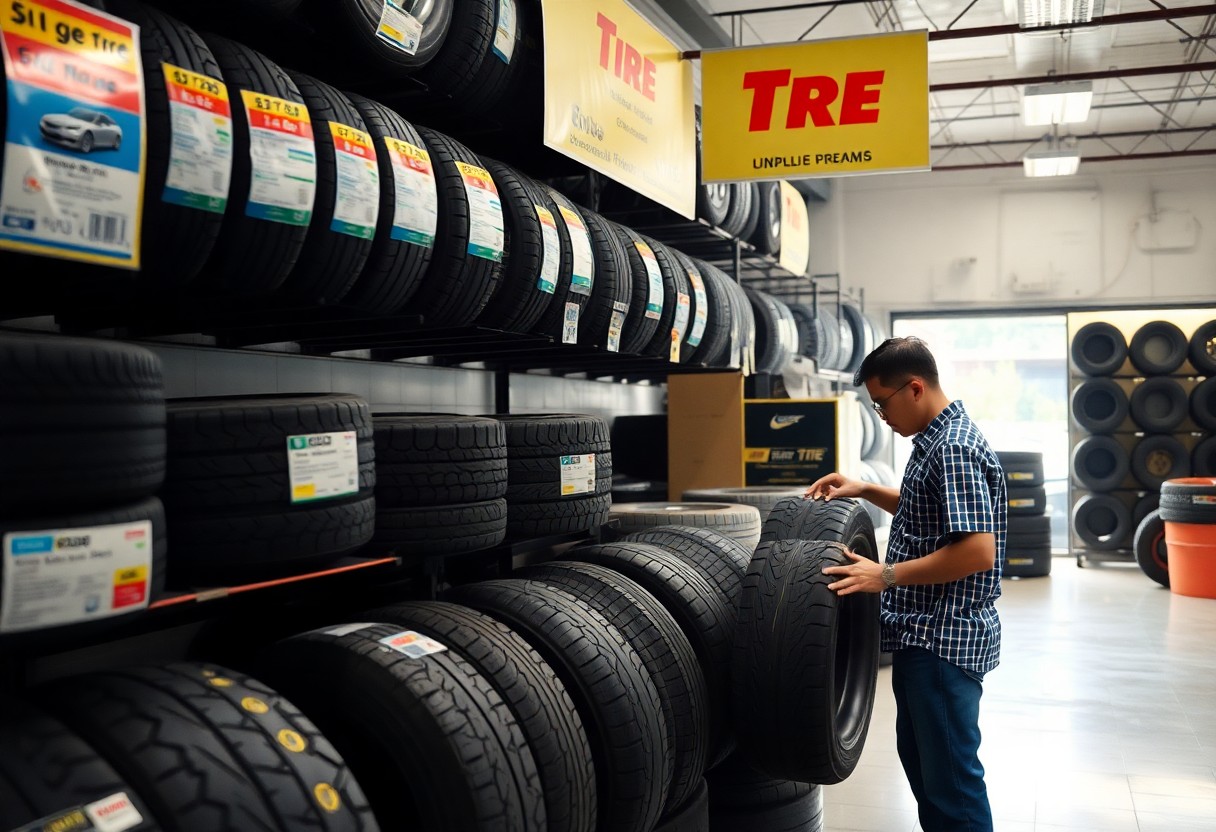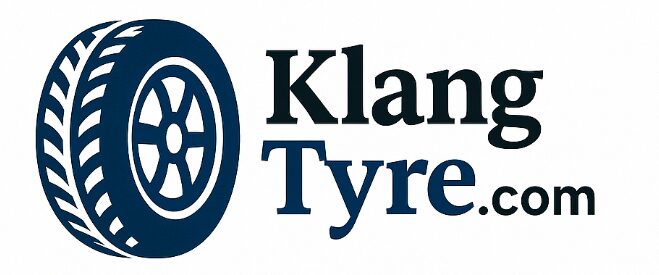You need to ensure your vehicle is equipped with the best tyres for safety, performance, and durability. When buying tyres in Klang, consider factors like size, tread depth, and compatibility with your vehicle. Additionally, be aware of the age and quality of the tyres, as these can greatly affect your driving experience. This beginner guide will help you navigate the necessary checks and make informed choices, ensuring you drive safely on Malaysian roads.

Key Takeaways:
- Assess the tyre size and specifications recommended for your vehicle, as indicated in the owner’s manual.
- Check the tread depth to ensure sufficient grip and performance, ideally looking for at least 1.6mm of tread depth.
- Examine the tyre’s manufacturing date, which can typically be found on the sidewall; aim for tyres that are less than six months old.
- Consider the type of driving you do, such as city commuting or off-road, to determine the suitable tyre type.
- Look for reputable brands with good warranties and reviews, as these can impact reliability and performance.
- Check for any visible damage or irregularities on the tyre surface, such as cracks or bulges, before making a purchase.
- Discuss installation and alignment services with the retailer, as proper installation is crucial for tyre longevity and performance.

Decoding Tyre Specifications: What Do the Numbers Really Mean?
Understanding tyre specifications can feel overwhelming at first, but breaking down the numbers and letters provides a wealth of information you can use to make informed decisions. Each code reflects imperative attributes, such as size, performance capabilities, and safety features specific to your vehicle. By decoding these specifications, you ensure that the tyre you choose will suit both your driving needs and your vehicle’s requirements, enhancing your overall driving experience.
Understanding Tyre Size and Profile
Tyre size is expressed as a series of numbers and letters, often found on the sidewall. For example, in the size 205/55R16, “205” signifies the tyre width in millimeters, “55” indicates the aspect ratio (the height relative to the width), and “R” means it is a radial tyre, followed by “16,” which represents the diameter of the wheel in inches. Knowing these figures allows you to select tyres that fit properly, ensuring safety and performance.
Deciphering Load Index and Speed Rating
The load index and speed rating, typically printed on the sidewall, provide additional critical information about a tyre’s capabilities. The load index represents the maximum weight a tyre can support, ranging from 75 (387 kg) to 100 (800 kg). Speed ratings, denoted by letters like H (210 km/h) or V (240 km/h), indicate the maximum speed the tyre can handle safely under optimal conditions. Matching these ratings with your vehicle’s requirements is imperative for safety and performance.
Choosing tyres with the appropriate load index and speed rating not only contributes to your safety but also impacts vehicle handling and fuel efficiency. For instance, selecting a tyre with a lower load index than required can lead to premature wear or even tyre failure, compromising your safety. Similarly, tyres with lower speed ratings may struggle to perform under the stresses of high-speed driving. Always ensure your selected tyres meet or exceed the specifications listed in your owner’s manual for optimal performance.
Material Matters: The Importance of Tyre Composition
The composition of tyres directly impacts performance, durability, and safety. High-quality tyres are typically made from a blend of natural and synthetic rubber along with various additives that enhance strength and resistance against wear. A tyre’s construction can include steel belts for reinforcement, providing better handling and stability, while softer compounds may improve grip but decrease longevity. By understanding the materials in your tyres, you can make informed choices that align with your driving habits and conditions.
Differences Between All-Season, Summer, and Winter Tyres
All-season tyres offer a balanced performance across different weather conditions, while summer tyres prioritize grip and handling on dry and wet roads, lacking the tread design for snow. Winter tyres are specifically engineered with softer rubber compounds and deep treads for optimal traction in cold, icy, or snowy environments. Each type serves a specific purpose, ensuring safety and performance depending on the climate and driving conditions you frequently encounter.
The Role of Tread Patterns in Performance
Tread patterns play a critical role in how your tyres perform in various conditions. Tyres equipped with broader grooves and larger voids are designed to channel water away, reducing the risk of aquaplaning. Conversely, tyres with a tighter pattern excel in dry conditions, maximizing contact with the road for enhanced stability. Additionally, asymmetric tread designs can provide versatile performance, catering to both wet and dry environments efficiently. Hence, selecting the right tread pattern not only promotes better handling but also extends tyre life.
Navigating Local Regulations and Standards
Being aware of local regulations and standards is a key part of ensuring that your tyre purchase complies with Malaysian laws and your safety on the road. Tyres must meet certain criteria for performance, durability, and environmental impact in Klang, ensuring that they perform optimally while adhering to safety protocols established by the authorities. Understanding these regulations will empower you to make a more informed decision when selecting tyres for your vehicle.
Compliance with Malaysian Tyre Regulations
In Klang, tyres must meet the JIS (Japanese Industrial Standards) and Malaysian Standards (MS) requirements to be considered roadworthy. These standards assess various factors like grip, stability, and resistance to wear, ensuring you choose a tyre that not only fits your vehicle but also holds up against local driving conditions. Non-compliance can not only affect performance but may also violate local traffic laws.
Importance of Certification Marks in Klang
Certification marks signify that the tyres have undergone rigorous testing and meet safety standards set forth by regulatory bodies. Look for the SIRIM (Standards and Industrial Research Institute of Malaysia) sticker on tyres, which indicates compliance with Malaysian safety regulations. This adds a layer of assurance and can significantly impact your choice.
Understanding the value of certification marks can guide you in selecting tyres that not only comply with local laws but also guarantee better performance. Certified tyres come with the promise of reliable quality, having passed a series of tests regarding safety and durability. Choosing tyres without proper certification can pose a risk not only to your own safety but also to that of other road users. Therefore, always prioritize certification marks while making your purchase in Klang; they can be a key indicator of tyre quality and reliability.

Evaluating Retailers: From Price Negotiation to Warranty Offers
Finding the right retailer is as important as selecting the right tyres. Price negotiation can lead to significant savings, especially when discussing bulk purchases or seasonal promotions. Additionally, look for warranty offers that protect your investment, as they can save you money in the long run if any defects arise. A reputable dealer often provides extended warranties or free services post-purchase, enhancing the overall value of your purchase.
Essential Questions to Ask Your Tyre Dealer
Before finalizing your tyre purchase, ask your dealer about tyre compatibility with your vehicle, as well as potential alternatives that may fit your needs better. Inquire about performance ratings and tread life estimates to gauge the longevity and safety of the tyres. Don’t hesitate to request details about the installation process and whether they provide any free rotation or alignment services.
Recognizing Red Flags in Tyre Quality and Retail Practices
Pay attention to signs that could indicate lower-quality tyres or questionable business practices. If the dealer is hesitant to show tyre certifications or provides minimal product information, consider that a red flag. Additionally, tyres with inconsistent tread patterns or visible damage may suggest poor manufacturing standards or mishandling by the retailer.
Some common indicators of subpar retail practices include an excessively rushed sales process, where the dealer avoids answering your questions, or if they push you toward a decision without proper research. Tyres with misleading information regarding performance or pricing can lead to regrettable purchases. Trust your instincts; if something feels off, it’s worth looking elsewhere.
Pricing Dynamics: Understanding Tyre Cost Variability
Your tyre budget can fluctuate significantly depending on various factors. Premium brands typically charge more due to advanced technology and materials, while budget options cut corners to lower prices. Keep an eye on differing retailers, as prices can vary between online and physical stores. Additionally, tax regulations and import tariffs may affect the final price, making it important to compare and review multiple quotes before making a decision.
Seasonal Influences on Tyre Prices
winter tyres might spike in price leading up to the colder months due to increased demand. Likewise, summer tyres can experience a price surge as temperatures rise and drivers prepare for road trips. Shopping during off-peak seasons may yield better deals, providing an opportunity to save money.
Hidden Costs to Watch Out For Beyond the Sticker Price
Additional expenses can add up beyond the initial tyre price. Consider installation fees, alignment costs, and any necessary extras like valves or balancing. Warranty offerings can also vary significantly, where some retailers provide limited coverage, while others might charge for an extended warranty. Always request a full price breakdown to avoid unpleasant surprises after your purchase.
Understanding hidden costs requires you to examine every aspect of the purchase process. For instance, some retailers might advertise attractive low prices, but additional charges for services like tyre disposal or environmental fees could surprise you at checkout. Always ask for clarification on all potential costs upfront. It’s wise to assess the total expense rather than focusing solely on the sticker price. Allocating some time to calculate and evaluate these factors ensures you make a fully informed decision that aligns with your budget and needs.
Conclusion
Conclusively, when buying tyres in Klang, it’s imperative for you to assess factors such as tyre size, tread depth, and the type of driving you do. Consider checking the manufacturing date and warranty conditions as well. Additionally, it’s beneficial to compare prices and seek recommendations to ensure you obtain quality products. Proper research and attention to these details will help you make an informed decision, ultimately enhancing your driving safety and performance.
FAQ
Q: Why is it important to check the tyre size when buying new tyres in Klang?
A: The tyre size is vital as it must match the specifications set by your vehicle’s manufacturer. This information can typically be found in your vehicle’s manual or on a sticker inside the driver’s door. Using the correct tyre size ensures proper handling, fuel efficiency, and safety on the road.
Q: What should I look for regarding tread depth when purchasing tyres?
A: Tread depth is important for traction and safety. When buying new tyres, check the tread depth to ensure it meets legal standards and is suitable for the driving conditions you typically encounter. A minimum tread depth of 1.6 mm is usually required by law, but consider higher tread depths for wet or off-road conditions for better grip.
Q: How do I assess the age of tyres before making a purchase?
A: Tyres have a production date stamped on them, usually in the form of a four-digit number on the sidewall. The first two digits represent the week of manufacture, while the last two indicate the year. It’s advisable to avoid tyres older than six years, as rubber compounds degrade over time, affecting performance and safety.
Q: What factors contribute to the price of tyres in Klang?
A: The price of tyres can vary based on brand, type, and specifications. Premium brands often come with advanced technology and better durability, which can increase cost. Size and type (such as all-season, winter, or performance tyres) will also affect pricing, as well as any additional services like installation and balancing offered by tyre shops.
Q: Are there specific features to consider for varying weather conditions in Klang?
A: Yes, when selecting tyres, consider the climate of Klang. If you regularly face heavy rain, opt for tyres with enhanced wet grip. For all-year-round use, all-season tyres are a good choice, but if driving in more extreme weather, you may want to explore dedicated winter tyres for better performance and safety.
Q: How can I check the warranty options when buying tyres?
A: It’s important to inquire about warranty terms when purchasing new tyres. Warranties can vary by manufacturer and may cover defects, tread wear, or road hazards. Ask about the duration of the warranty and what it entails, including whether it can be transferred if you sell your vehicle.
Q: Is it advisable to get a professional’s opinion before buying tyres?
A: Yes, consulting with a tyre specialist can be beneficial, especially for beginners. They can provide insights based on your driving habits, vehicle type, and local conditions, helping you choose the right tyres for your needs. Additionally, they can perform necessary installations and recommend maintenance practices to prolong tyre life.
